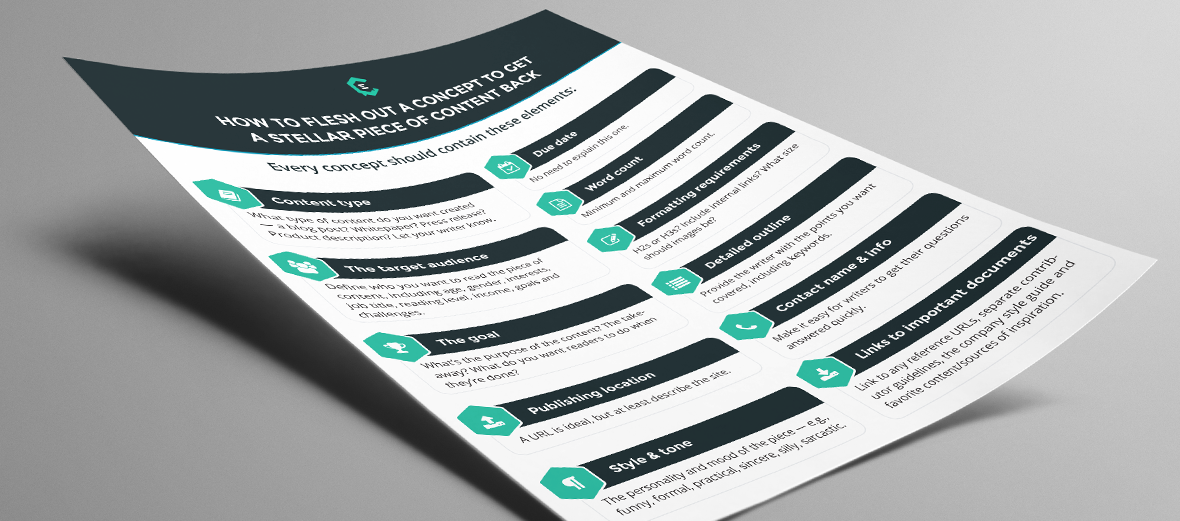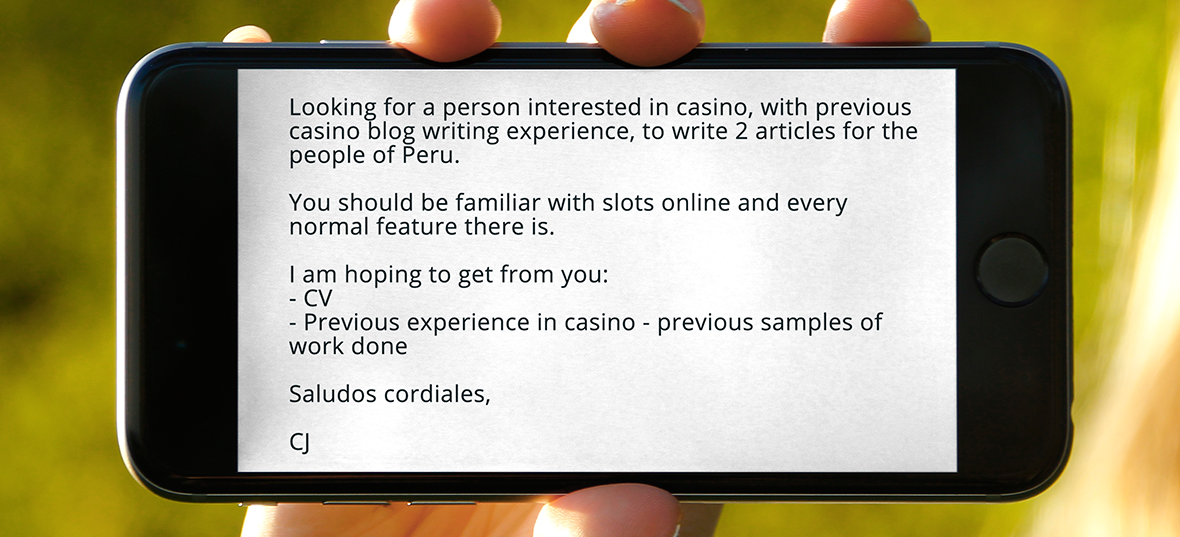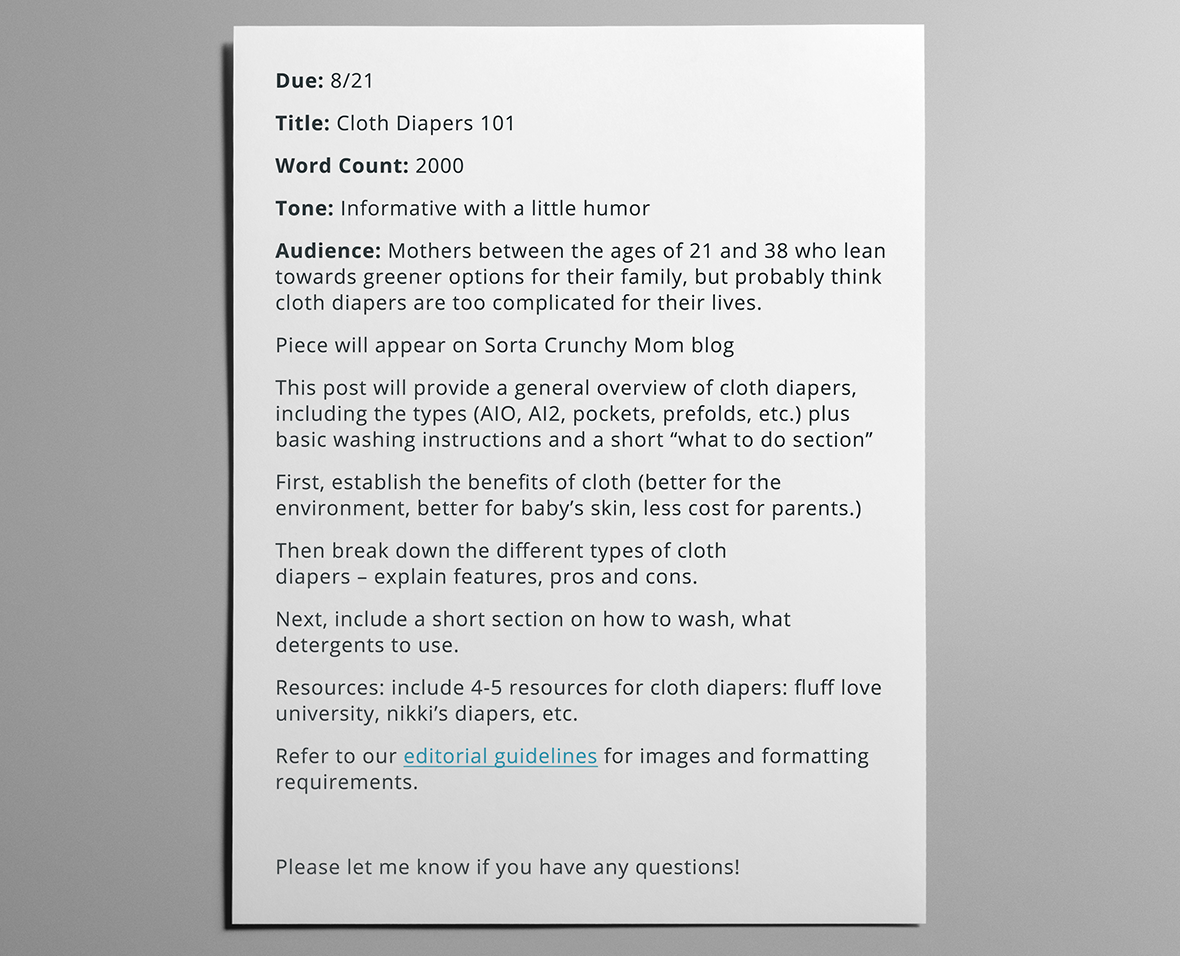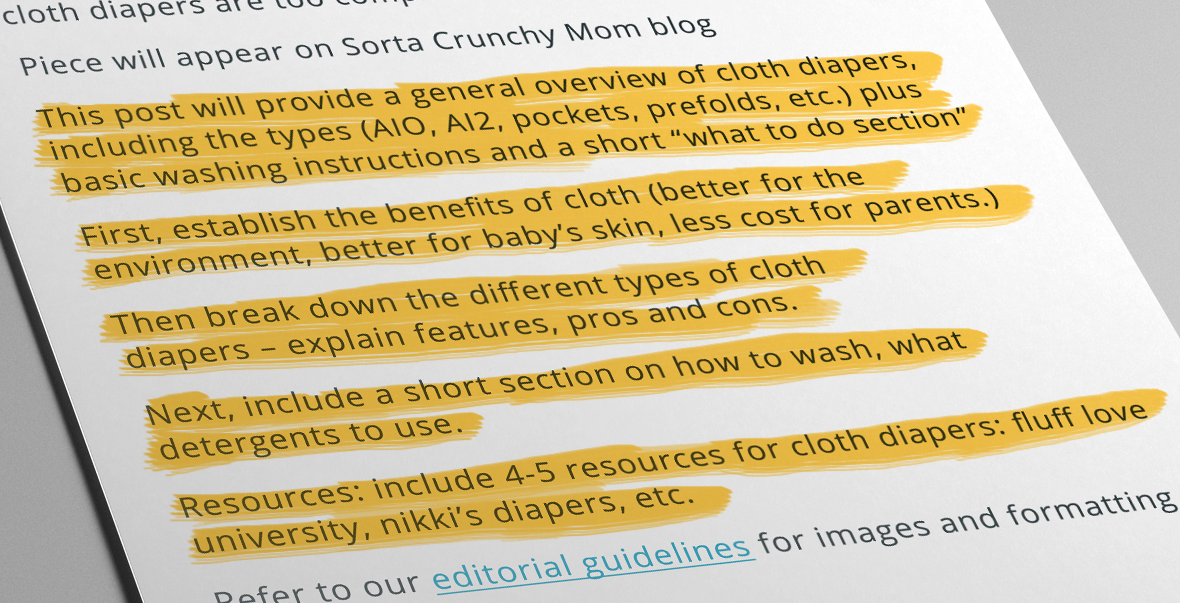Delegating content production to in-house writers or outsourcing it to freelancers is a great way to ramp up your content marketing at scale. However, the process becomes difficult and time-consuming if you have to spend hours answering writers’ questions, requesting revisions or reworking mediocre content. This wastes your time and budget.
How do you avoid the headache? Provide writers with a comprehensive, fleshed-out concept.
What’s a concept? For the purpose of our discussion here, a concept is the document that includes every piece of information writers need to produce the exact type of content that you need. It’s the instructions. You may also hear it referred to as the creative brief, writer’s brief, outline or sometimes, simply “the assignment.”
Providing your writer with a solid concept is beneficial to both your editorial team and the writer. Clear expectations give writers the information they need to create content precisely targeted for your audience. In turn, it saves your editorial team time answering questions down the road and produces content that needs less editing.
Creating a detailed concept does take a bit of time up front, but it can save you hours of time later and result in better content. This post walks you through, step by step, how to provide your writer everything they need to produce high-quality content that gets results.
Elements of a solid writing concept
Let’s look at a few examples of writing concepts, and then discuss what should be included in a great writing concept.
This one is from a popular freelancing platform. It is sparse.
They provide virtually no details, no word count. I can’t even tell if they want the article in English or Spanish, or how it would relate to the people of Peru. Even if their intention is to provide that information later, I can’t even tell if I would be a good fit for this gig based on the information provided.
Now, let’s look at an example of a more concise concept.
This concept provides exactly what the writer needs to produce a killer piece of content — you have the due date, the word count, the goal of the post, where the post will be published, what tone to use — even an outline to get the writer started.
Which concept do you think will return a better piece of content? The one with clear expectations, hands down.
Here are the features every concept you create should include.
Content type
What type of content do you want created — a blog post? A white paper? Press release? Product description?
The target audience
Providing the target audience helps the writer create a personalized piece of content.
The language used in an article aimed at a CMO is much different than the language you would use for a social media intern. A CMO likely knows what ROI is, they know what Facebook ads are, they know how to track traffic. For a marketing intern, you would want to define those phrases.
When defining the target audience, consider building out a robust persona that includes the age, gender, interests, job title, reading level, income, goals and challenges. This article on Buffer explains exactly how to build a robust persona.
Be as detailed as you can, so the writer can envision precisely who your audience is as they write. This will help them use language that will resonate with your audience.
The goal
What is the purpose of your article? The takeaway? What problem does it solve or what action do you want the reader to take?
This information helps the writer craft a piece of content that a), does what you want it to do and b), inspires action.
Where the piece will be published
Let’s go back to the online casino example above. Where this piece of content is going to end up matters a great deal — if it is for an online casino’s blog, the writer would include internal links to the site and avoid linking to competitors. They could safely assume a certain level of gambling knowledge.
By contrary, if it were to appear on an addiction website, the article would be vastly different.
Sharing where the article will be published also allows the writer to research the tone and feel of the site.
Due date
This one is self-explanatory.
Style & tone
According to Grammar Girl, voice is “the distinct personality, style, or point of view of a piece of writing or any other creative work. Voice is what Simon Cowell is talking about when he tells “American Idol” contestants to make a song their own and not just do a note-for-note karaoke version.”
Tone, on the other hand, is best described as the “mood” of the writing. Is it funny? Formal? Practical? Sincere? Silly? Sarcastic?
A great writer can use tone and style to create a piece that matches well with your brand identity and pulls readers in instead of turning them off.
Word count requirements
Give the writer a minimum and, if there is one, a maximum word count. Consider adding 100 words or so to your actual word count requirement, so you cut the fluff during editing.
Formatting requirements
Hiring a writer should help you save time — but if you spend an hour deleting <div> and <span> tags from the HTML, what good did that do you? Be clear about headings, how to cite sources, whether you want links embedded into the content, and the size of required pictures.
Detailed outline
Your outline should provide the writer with exactly which points to cover, including any keywords you might be trying to hit. In the cloth diaper example above, the editor provided this information:
Lay out the points you want the writer to make. This could look something like this:
- Section 1
– Points to cover, supporting info
- Section 2
– Points to cover, supporting info
- Section 3
– Points to cover, supporting info
Contact name & info
Make sure to include a point of contact for the writer. Make it simple for them to get questions answered quickly — this will help you get the content you wanted within the timeframe you want it.
The point of contact should not be someone in upper management who won’t have the time or the information necessary to quickly answer questions. An editor or content manager should oversee all your writers to ensure they have the information needed to be successful.
Links to other relevant documents
If you hire writers often, you should create contributor guidelines and a company style guide. Then, make sure to include links to these documents with your concept.
Also, let your writer know what you consider a reputable source and include examples. And if you have any reference URLs or favorite blog posts that you want to emulate, include links to those as well.
Great content, fewer headaches
Stellar concepts beget stellar content. Empower your writer with the tools and information they need to produce the high-quality content your audience is craving.










